Croatia is known for a great many things, garnering an aura of wonders for tourism and culture. Located within the crevices of Central and Southeast Europe, this country covers a land area that stretches a total of 56,594 square kilometers.
For scale with square miles, that is a total number of 21,851 square miles. In addition to this, this European country holds a grand total of four million people living in it.
11 Best Croatian Indigenous Wine Sorts
Table of Contents
Considering how this European country is known for its tourism and culture, for this article, let us dive into the many different wines that Croatia has to offer to the world.
Pošip – Korčula Indigenous White Wine
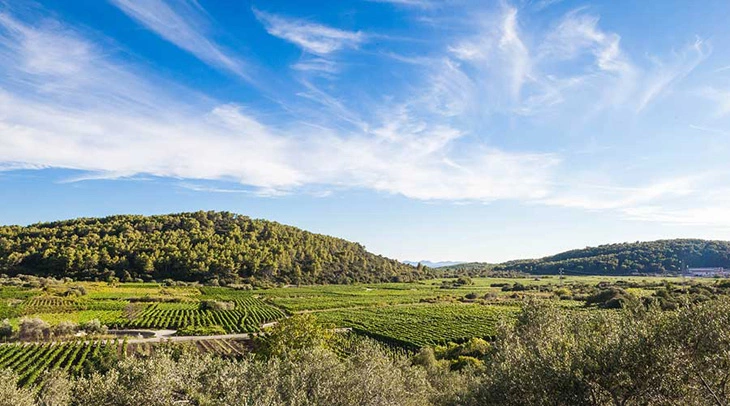
Region: Dalmatia (e.g. island of Korčula, Pelješac Peninsula, Smokvica, Čara)
Type of Grape: white wine (autochthonous)
Alcohol Level: 12%-13%
Climate: hot
Situated by the Adriatic Sea’s east shoreline, Dalmatia is one of Croatia’s most famous regions. It extends from the Rab island (northern area) all the way to the Bay of Kotor (southern area).
A few well-known cities from this region include Split (its largest city), Šibenik, and Zadar as well as Dubrovnik (where Pošip is also manufactured).
Although the Pošip wine is famously known in the southern part of Dalmatia, Korčula is the island of origin for this specific wine.
It is considered to be one of the most widely used wines in the country, considering how it is largely produced by local vintners and winemakers. A reason for its popularity is also because of its demand in the market. This wine is best stored at a temperature of 14°C (57.2F).
Pošip garners a high sugar content, each liter harboring around 20-25 grams for each liter of it.
In addition to everything mentioned above, the acidity level of this is deemed to be of solid acidity. Taste-wise, Pošip embodies a powerful yet refreshing taste. The flavor profile of the Pošip wine usually leans to citrus, peach, and apricot.
In comparison to the Istrian Malvasia as well as the Chardonnay, Pošip is considered to be the only white grape wine that is fermented in barrique barrels wherein no clouding is observed and is still able to hold its original taste.
This wine goes well with dishes that have fish in them such as Pršut and light cheeses such as Paški sir or what we know to be called Pag island cheese (in which is locally grown in Croatia).
Zinfandel (Kaštelanski Crljenak) – Croatian Native Red Wine
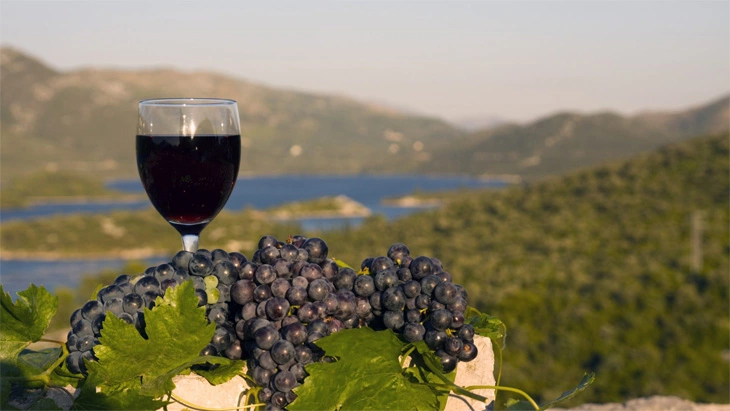
Region: Dalmatia (southern area)
Type of Grape: Red wine (black-skinned grape)
Alcohol Level: 13.5%-16%
The primary flavor profiles of the Zinfandel (Kaštelanski Crljenak) wine are of the following: sweet tobacco, cinnamon, peach preserves, and strawberry as well as blackberry.
This specific wine can exceed over the 15% ABV. Because of this, one can infer that this specific wine holds a subtle floral flavor accent as well as a strong, robust fruity flavor.
Some would even say that the taste feeling would be like leather due to its deep and dark flavors. Aroma-wise, this wine will waft off strong and serious aromas once smelled upon. It also exhibits a salty-like nature, making it seem nice while drinking in a beach-like setting.
In terms of acidity, it ranges within the medium-low spectrum. Tannins would be in about the medium-high tannins, its body extending within the medium-full aspect.
This wine goes well with food that are heavy on Turkish as wella s Moroccan spices.
Flavor hints of cinnamon-spice work well with the Zinfandel (Kaštelanski Crljenak) wine. Pizza such as the Puglian classic (which is essentially a calzone with olives, anchovies, and tomatoes as well as roasted onions) is a good pairing as well.
Plavac Mali – The Best Croatian Wine
Region: Dalmatia (e.g. island of Korčula)
Type of Grape: Red wine
Alcohol Level: 12%-17%
Just like the Pošip wine, the Plavac Mali wine is manufactured in Dalmatia. Specifically, vineyards that harvest this wine are seen in the island of Korčula.
The etymology of the name Plavac Mali derives itself from the blue grapes in which the wine is harvested from. The blue grapes, in itself, are small in nature; thus, plavo pertains to blue and mali pertains to small.
This specific wine is considered to be the older brother of the Zinfandel and the Primitivo.
Around 40 years, this wine was incorrectly recognized as the Zinfandel’s ancestor. However, after further research, it was brought to light that the Zinfandel is one of the parent wines of the Plavac Mali (the other being the Dobričić).
The Plavac Mali projects a deep and dark red color, wafting out an aroma of dried cranberries, black cherries, and figs as well as plums with subtle olfactory accents of dark chocolate and herbs from the Mediterranean.
Its flavor profile gravitates towards boldness and elegance, with that hint of natural tannins once one takes a sip of this luscious, rich wine. This kind of wine is created as a dry red wine, going well with dishes that have fish, seafood, and ham as well as the local cheeses in them.
Graševina – Most Popular White Wine In Croatia
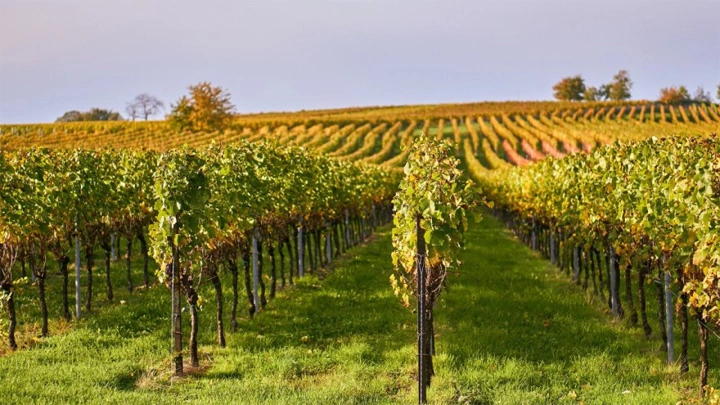
Region: Ilok, Erdut, Baranja
Type of Grape: White wine (Vrhunsko vino)
Alcohol Level: 14% and up
Located in the eastern areas of Croatia (specifically Ilok and Erdut as well as Baranja), the Graševina wine utilizes a local grape variety that has a late harvesting time.
The regions in which this local grape variety grows are Baranja as well as Syrmia and well-known major cities such as Osijek.
Flavor profiles that dominate this specific wine lean towards flowery as well as fruity characteristics. Hints of sweet honey can be sensed by the nose and this is cut through by the apple and citrus flavor profiles of this wine.
In addition to all of this, pears and quinces as well as ripe fruits. Floral characteristics manifest as one of elderflowers that grow near the vines of this local grape variety.
The Graševina wine also exhibits some minerality within it and this is because of the soil in which this grape is grown.
For a lot of the time, this kind of wine is sold in markets while they are still young. However, that does not mean that this wine is not used for aging as well. In terms of acidity, this wine is quite crisp.
Alcohol levels for the Graševina wine are of the medium degrees. This specific wine is a great starter to a lot of different meals. Salads, cured meats, and cheeses go well with this floral, fruity wine as well as shell food dishes such as oysters and clams.
This can be harvested in temperatures as low as 0°C.
Teran – Istrian Famous Red Wine
Region: Istria Peninsula
Type of Grape: Red wine
Alcohol Level: 11%-14%
The Teran wine can be found in abundance in Istria (the western area, to be exact). Istria is considered to be the Croatian peninsula that is largest in size alongside the Adriatic Sea.
It stretches out from the top area of the Adriatic Sea, located in the crevices of the Kvarner Gulf and the Gulf of Trieste.
Countries such as Italy and Slovenia as well as Croatia share the borders for this peninsula.
What is unique with this specific wine is its sensitivity towards harsh climate. As stated above, the vine for this wine needs sun in order to ferment itself. However, it is also extremely sensitive to too much sun and too much humidity.
Teran grapes is what makes up the Teran wine, as made evident by the name. Its berries are of a variety that is more on the late-ripening side, large clusters inhabiting these berries that densely pack them all together.
According to Croatia’s most popular and high-quality red wines, the Teran wine is remembered as one with the highest quality.
This specific wine garners characteristics of rich, robust flavors, exhibiting acidity of a slightly higher degree than a lot of other red wines and is usually served to wine connoisseurs at 18°C.
Just like the Plavac Mali, the Teran wine gives off a ruby-red color. Some would even say it leans more to an almost purplish color, wherein aromas lean more to fruity aromas.
Dingač – Top Quality Red Wine From Pelješac
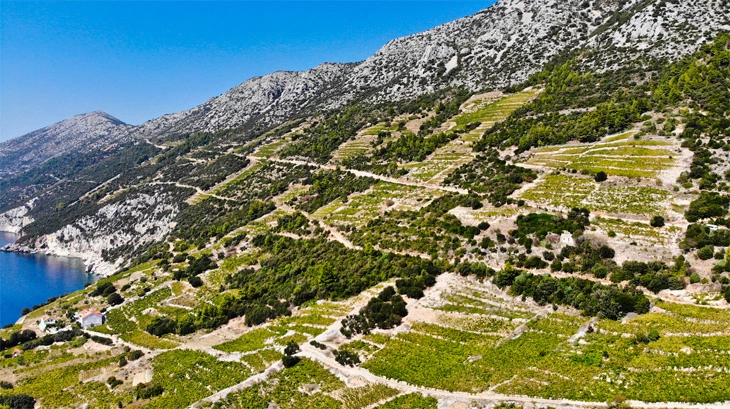
Region: Pelješac Peninsula
Type of Grape: Red wine
Alcohol Level: 14%
Located within the sub-regions of Pelješac Peninsula, the vineyards for the Dingač wine are grown within Middle and South Dalmatia in limited areas.
The Pelješac Peninsula is considered to be the second largest Croatian peninsula and is highly associated within the Dubrovnik-Neretva County.
It travels along a total pathway of 40 miles or 65 kilometers, starting along the isthmus at Ston and ending at Cape Lovišta.
This wine is considered to be a close variant to the Plavac Mali, exhibiting properties and characteristics quite similar to the Plavac Mali. The Dingač wine shows off a color of, yet again, ruby red, exhibiting dark accents that project flavor descriptions of clarity and fine wine.
Its flavor profile, as mentioned above, is one close to the Plavac Mali, exhibiting a fruity flavor profile and aromas that pertain more to berries.
This wine gives off taste hints that gravitate towards spice, prunes, currants, and other similar dark fruits.
The Dingač wine extends a good balance of acidity and tannins.
This wine goes well with dishes that have roasted qualities within them, such as red meat marinated in spices. In addition to this, ripe cheeses complement this wine quite well. This is in kahoots with traditional dishes from the Dalmatian region of Croatia.
It is best served as it is and chilled to 18°C.
Vugava – Indigenous Grape From Island Of Vis, Croatia
Region: Vis, Dalmatia (central area)
Type of Grape: White wine
Alcohol Level: 14%
As made evident in previous statements above, the most notable grape variety within the Dalmatia region is the Plavac Mali. Islands such as Vis, Brač, and Korčula have been thriving in their production of local grape varieties and the like.
Central Dalmatia, on the other hand, has a slightly more different grape variety that it locally produces and manufactures.
The Vugava wine is looked at in comparison with the Viognier (another kind of white wine grape variety).
Vugava is known to be of old variety, dating back to the time of the ancient Greeks, either curated by them or shown the ways of cultivating it by the Romans. This specific white wine grape variety makes it essential that a good amount of attention is given to its vines and is quite particular with its harvest time.
Even though this wine is considered to be of high-quality, it is normally utilized for blending purposes together with famous wines such as Sauvignon Blanc and Pinot Gris as well as Chardonnay.
Because of its strong, overripe aroma and high sugar content, the Vugava wine is considered to be a viable choice for wine blending.
This wine goes well with seafood dishes (e.g. salmon steak, white fish, clam stew, scampi, squid). Hard cheeses that have strong aromas as well as dry cakes pair well with the Vugava wine and is usually used as some sort of aperitif too.
That is when it is used as Prošek wine. It is best served as it is and chilled to 10°C.
Babić – Red Grape Variety From Central Dalmatia
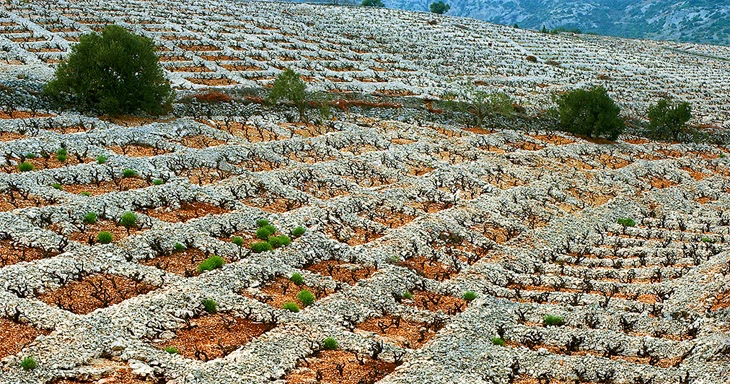
Region: Dalmatia (northern area; Šibenik region, Primošten, Korčula, and island of Pag)
Type of Grape: Red wine
Alcohol Level: 13%-15%
As discussed up there, Dalmatia is known to harbor many different kinds of local grape varieties and the Babić wine is no exception to this. Just like the Plavac Mali, as wholly mentioned above, the Babić wine showcases a dark, ruby red color (an almost purplish color, if you will).
This wine inhabits both a high sugar content and a high alcohol content. The wine one would get from the Babić grape has a taste profile gravitating towards a dark, thick texture.
Tannins are of high degrees with this wine and hold so well to its aging process.
What makes this wine grape unique in nature is the kind of soil in which it grows in.
One can get their best harvest when it comes to the Babić grape variety when the vineyards are grown and proliferate in rocky ground, coarse and rough environments that are exposed to raw sunlight.
Flavor profiles that lean more to dark, fruity hints such as figs and dark berries as well as plums are what makes up Babić wine.
Flavors such as spices and tobacco are also observed in this specific wine.
Babić goes well with meat dishes such venison and pork tenderloins as well as New York strip steaks. Vegetables such as mushrooms and potatoes pair well with this wine as well.
Bogdanuša – Autochthonous Croatian Wine From Hvar Island
Region: Island of Hvar (Stari Grad Plain)
Type of Grape: White wine
Alcohol Level: 12% and up
The island of Hvar is known to be an island within the Adriatic Sea. This very island has made a name for itself, being that of an island that is very much like a summer resort.
Hvar island holds a number of coves and beaches that are quite secluded in nature. It is also known for its visual aesthetic that makes it look like the whole place is from the era of the Renaissance, as made evident by the Hvar Cathedral.
The Bogdanuša wine is usually drunk in religious festivals and gatherings. Because of that, the word Bogdanuša (which means given by God) is what gave it its honorary name. This kind of wine is created as a dry white wine, giving off a color tinge of yellow-green to an almost golden color.
The Bogdanuša wine pairs well with a lot of seafood dishes (e.g. squid, seafood stew, brodet). In addition to this, food that has turkey in them is also a good choice.
The soil in which this wine is grown refers to more moist and fertile as well as deep soils within the Stari Grad Plain.
The grapes for the Bogdanuša wine is solely for soils of this kind only. Other locations will not make this local grape variety flourish properly.
Because of this, harvesting this kind of local grape variety in large batches was never considered.
Grk – Exclusive Croatian Grape From Korčula
Region: Dalmatia (southern area; island of Korčula)
Type of Grape: White wine (autochthonous)
Alcohol Level: 12%-14%
As discussed up there, Dalmatia is known to harbor many different kinds of local grape varieties and the Grk wine is no exception to this. The Grk wine is quite the rare kind, harboring a variety of autochthonous.
This wine is a close cousin to the Zinfandel (Crljenak Kaštelanski) and the Primitivo. This local grape variety is well-known for the “most feminine” out of every grape in existence.
This does not pertain to taste, unfortunately, but because of the biological aspect of the vine (which is female). For it to flourish and grow accordingly and properly, vineyards of other grape varieties should be planted along with it.
In terms of acidity, this wine is quite high in that department, wafting out a moderate aroma that contributes to accentual hints pertaining to a salty nature as well as of pine. The Grk wine is typically grown in stony soil, grown around the areas of Lumbarda within the Korčula island, and this is because of its strong minerality.
The Grk wine exhibits a yellow color, one of golden accents. The aroma profile of this wafts out one of fruity nature, with a hint of herbal. Sweetness and freshness make up the taste profiles of this specific wine.
This wine goes well with seafood dishes, such as pan-fried white fish (seabass) and steamed clams as well as the traditional brodet, a Dalmatian seafood stew.
Other kinds of food also pair well with the Grk wine, such as risotto and other similar dishes. Dishes that mainly focus on chicken and vegetable salads as well as soups pair quite well with this wine.
Debit – Yellow-gold Wine From Croatian Coast
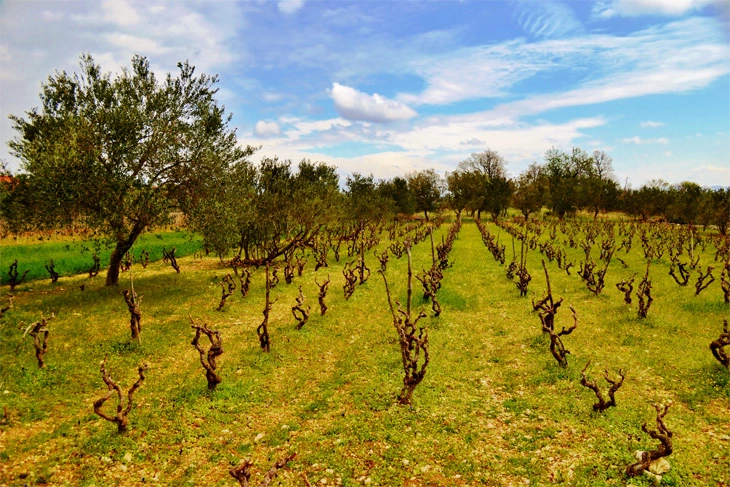
Region: Dalmatia (northern and central areas)
Type of Grape: yellow-gold grape variety
Alcohol Level: 12%
As discussed up there, Dalmatia is known to harbor many different kinds of local grape varieties and the Debit wine is no exception to this.
The Grk wine is grown in the northern and central areas of Dalmatia. Although it is known that this local grape variety is from Croatia, there are claims that it may have also come from Italy. Folklore-wise, the name for the Debit wine has been around since the Napoleonic Wars.
Because of its rich extract, vintners and winemakers are able to produce and manufacture large batches of this wine. This makes it an ideal choice for wine aging in barrels, not to mention dabbling into yeast sediments.
The flavor profile of Debit is one of minerality and citrus taste and, because of that, the Debit wine has a name for itself when it comes to refreshing and smooth tastes.
In terms of acidity, this wine is quite high in that department. In addition to all of this, the sugar content for the Debit wine is also quite high. Because of this, this specific wine is a great candidate for dry, sweet wine production.
An example of this kind of wine is sparkling wine such as the prosecco.
Stews (e.g. brodetto, a traditional Dalmatian fish stew) and smoked fish (e.g. smoked trout) as well as beans (deep-fried broad) are only a few of the dishes that pair well with the Debit wine.
